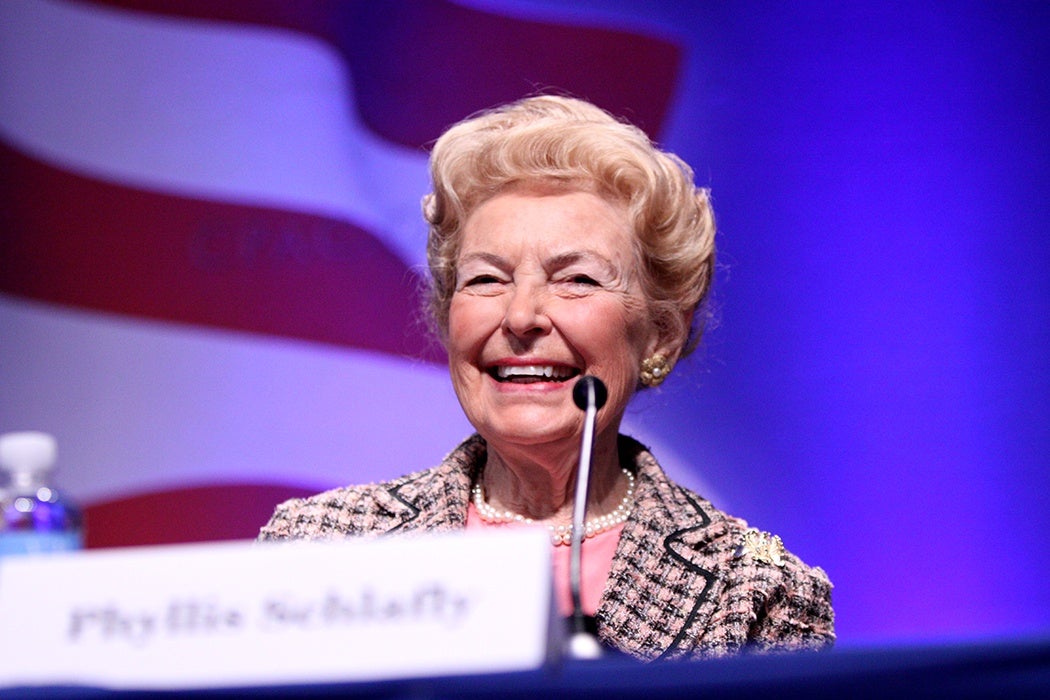In 1982, conservative icon Phyllis Schlafly, who died last Monday at the age of 92, wrote a letter to The Wilson Quarterly reveling in the then-recent, crushing defeat of a plan to allow women into military combat. “American women still expect their men to protect and defend them,” she wrote. “And American men will never stoop so low as to send their wives, sisters, sweethearts, and daughters out to fight enemy men.”
From today’s vantage point, many of the anti-feminist ideas Schlafly espoused sound extreme. But it’s worth thinking about why so many people found her message compelling.
In a 1991 paper, Susan E. Marshall looked at the popular support for Schlafly and other antifeminist activists over the previous two decades, starting with their successful fight against the Equal Rights Amendment in the 1970s. Marshall writes that, in some ways, opinions about the ERA didn’t break down the way we might expect. Men and women were equally divided, and homemakers were just as likely to support the amendment as their job-holding counterparts. On the other hand, women who were white, married, older, or less educated were particularly likely to oppose it.
But simply talking about the issue in terms of demographics misses the ideological origins of antifeminism. Schlafly’s Stop ERA project, which later transformed into the Eagle Forum, was an inseparable part of New Right ideology, which blended “traditional values,” economic individualism, and anticommunism.
Antifeminists didn’t just oppose the ERA, government-sponsored childcare, and family leave because they wanted women to stay home and raise kids. They were also worried about letting men evade their responsibility to provide for their families, giving government too much power over businesses’ operations, and turning childrearing over to socialistic institutions. Ultimately, the deeper argument of antifeminism was that capitalist individualism depended on a family structure in which women, rather than the government, took responsibility for human needs that couldn’t be satisfied in the market economy.
Today, feminists have changed the way many issues are discussed. Supporting women’s military service is now a mainstream view; just months before Schlafly’s death, a bipartisan Senate majority agreed to a plan that would include women in the military draft. Government-sponsored child care is popular enough that the 2016 Republican candidate for president has made it a part of his platform. And most businesses now at least acknowledge that they need policies to support women with family responsibilities.
Weekly Newsletter
But it would be wrong to simply dismiss antifeminism as an archaic view. Although it’s rarely discussed, a “traditional” view of families is, in some ways, baked in to the New Right-style anti-government rhetoric that’s still a prominent part of mainstream political conversations today. For example, Ramesh Ponnuru argued in the New Republic last year that unmarried adults are less likely to embrace economic conservatism because their finances tend to be less stable, making a larger social safety net more appealing. Writing for the conservative Heritage Foundation in 2013, Ryan T. Anderson took this a step further, claiming that marriage can only do the work of strengthening civic society and raising good citizens if it involves a man and a woman in different, complementary roles. These are positions that Schlafly helped give voice to years ago.







